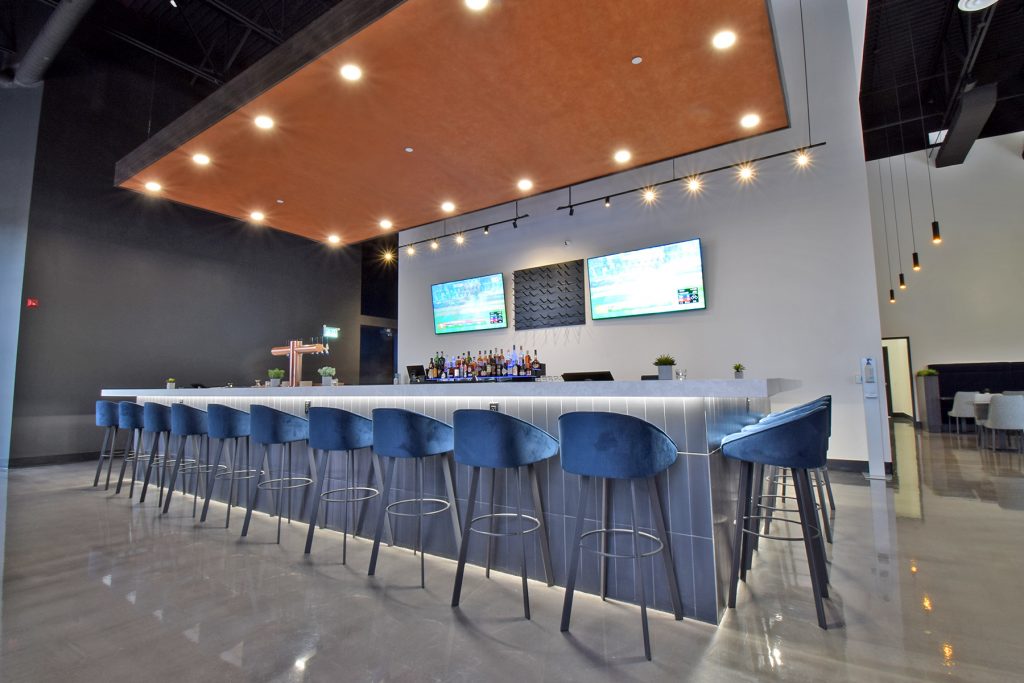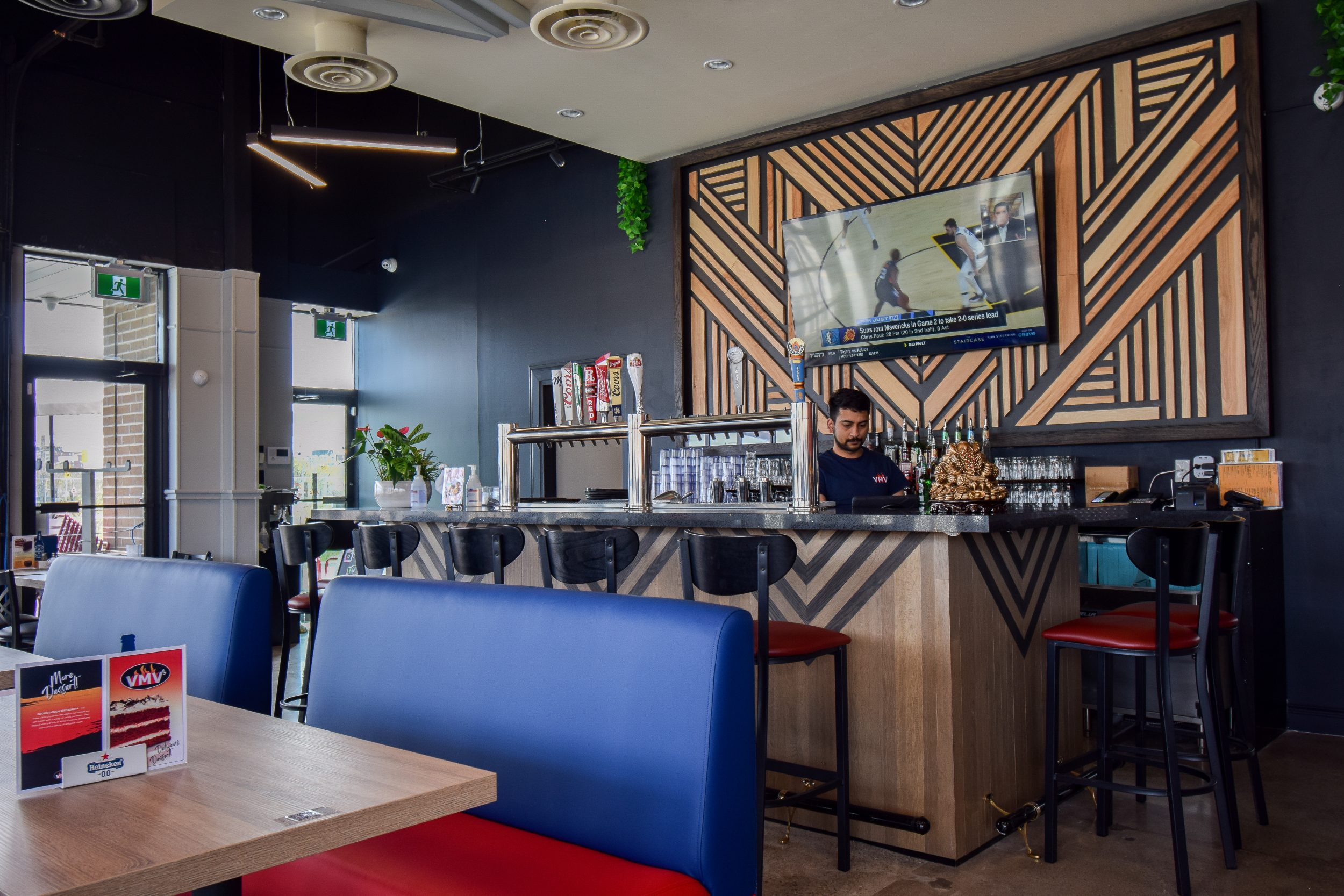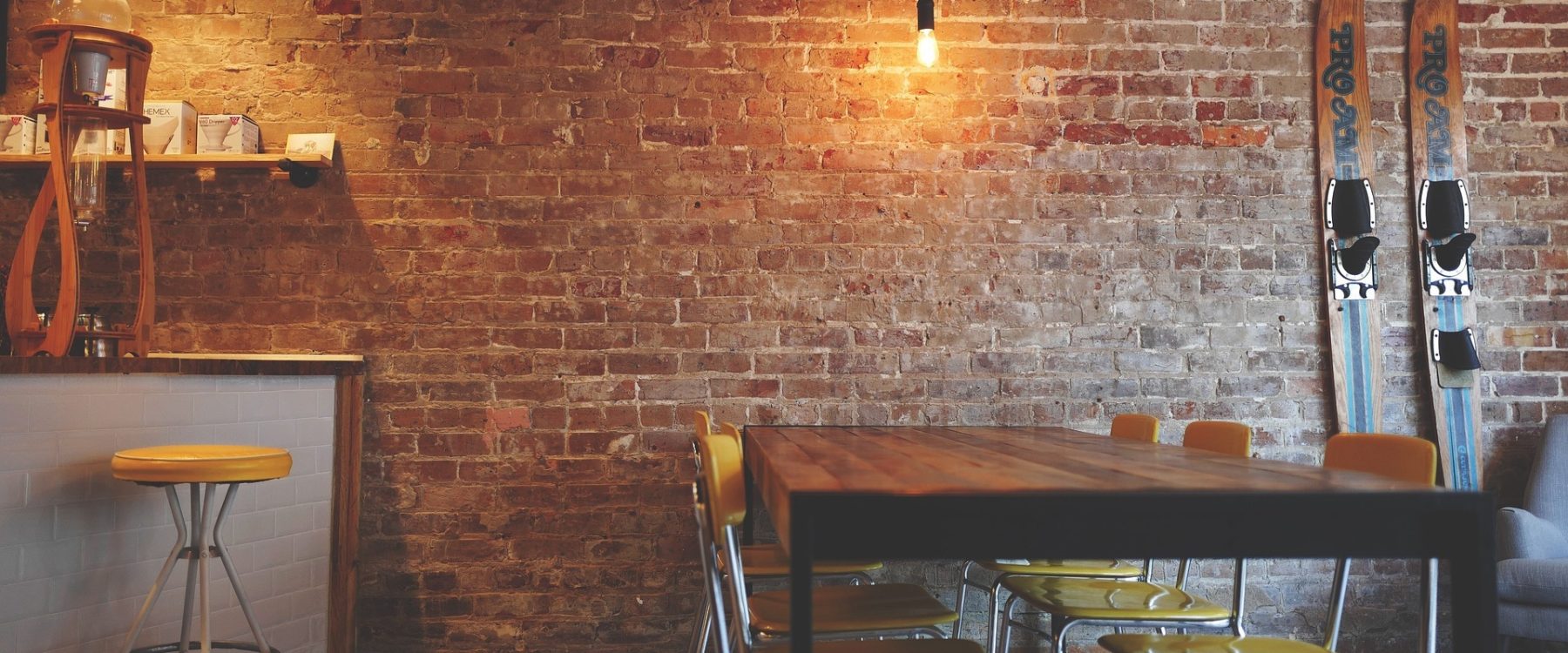Restaurant design refers to the planning and execution of the layout, decor, and overall atmosphere of a restaurant. It plays a crucial role in creating a positive dining experience for customers, and can impact factors such as customer satisfaction, loyalty, and overall success of the business.
There are many factors that go into the best restaurant design, including the size and layout of the space, the type of cuisine being served, the target customer demographic, and the overall atmosphere and theme of the restaurant.
Some common elements of restaurant design include:
- Layout: The layout of a restaurant refers to the arrangement of the tables, chairs, and other furniture, as well as the flow of traffic and movement within the space. The layout should be functional and efficient, and should allow for easy movement and access to all areas of the restaurant.
- Decor: The decor of a restaurant refers to the visual elements of the space, including the furniture, lighting, wallcoverings, and other decorative elements. The decor should be cohesive and in line with the overall theme and atmosphere of the restaurant.
- Atmosphere: The atmosphere of a restaurant refers to the overall mood and ambiance of the space. This can be created through the use of lighting, music, and other sensory elements, and should be tailored to the target customer demographic and the type of cuisine being served.
- Theme: The theme of a restaurant refers to the overall concept or concept of the space. This can be anything from a specific cultural or historical influence, to a particular type of cuisine or atmosphere. The theme should be reflected in all aspects of the restaurant design, from the layout and decor to the menu and branding.
What are the Top 6 Restaurant Design Styles?
Restaurant design trends tend to change fairly frequently, as new design styles and technologies emerge and consumer preferences evolve. Some trends may last for several years, while others may come and go more quickly.
There are many factors that can influence changes in restaurant design trends, including changes in consumer preferences, the emergence of new technologies and materials, and shifts in cultural and social norms. For example, in recent years, there has been a trend towards more sustainable and eco-friendly restaurant design, as consumers become more conscious of environmental issues. Similarly, the rise of food delivery and takeout services has led to an increase in the number of restaurants with more efficient and streamlined kitchen layouts.
Below is a list of the Top Restaurant Design Trends in Canada:
1. Modern Design
Modern restaurant design often features clean lines, minimalism, and a focus on functionality. Materials such as glass, steel, and concrete are often used, and the overall look is sleek and contemporary.
What is Modern Restaurant Design?
Modern restaurant design is characterized by a focus on simplicity, functionality, and minimalism. It often incorporates clean lines, neutral colors, and a limited number of materials, such as glass, steel, and concrete.
In modern restaurant style, the overall aesthetic is sleek and contemporary, and there is a strong emphasis on form following function. The goal is to create a space that is visually appealing and easy to navigate, while also being efficient and practical for the staff.
Features of modern restaurant design may include:
- Open floor plans: Modern restaurants often have open floor plans that allow for flexibility and ease of movement. This may involve the use of movable walls or screens to divide the space into smaller areas, as needed.
- Clean lines and minimal decor: Modern restaurant design is characterized by a lack of clutter and a focus on simplicity. Decor is kept to a minimum, with an emphasis on functional, high-quality materials.
- Natural light: Modern restaurants often make use of natural light to create a bright and welcoming atmosphere. This may involve the use of large windows or skylights, or the incorporation of natural materials such as wood and stone.
- Technology: Modern restaurants may incorporate technology such as tabletop tablets, self-service kiosks, or digital menu boards to improve the customer experience and streamline operations.
Overall, modern restaurant design seeks to create a space that is visually appealing and easy to navigate, while also being functional and efficient for the staff. It is a popular choice for many restaurants, as it can create a modern and sophisticated atmosphere that appeals to a wide range of customers.


2. Industrial Design
Industrial restaurant design incorporates raw materials and unfinished elements, such as exposed brick walls, concrete floors, and metal fixtures. The overall look is edgy and urban, and often incorporates vintage or reclaimed elements.
What is Industrial Restaurant Design?
Industrial restaurant design is characterized by the incorporation of raw and unfinished materials, such as exposed brick walls, concrete floors, and metal fixtures. The overall look is edgy and urban, and often incorporates vintage or reclaimed elements.
In industrial restaurant style, the focus is on creating a rough and industrial atmosphere, and there is often a mix of new and vintage elements. The goal is to create a space that feels unique and authentic, and that reflects the character and history of the surrounding area.
Features of industrial restaurant design may include:
- Exposed materials: Industrial restaurant design often incorporates exposed materials such as brick, concrete, and metal, which give the space a raw and unfinished look. These materials may be left in their natural state, or they may be paired with more polished elements such as wood or glass to create a contrast.
- Vintage or reclaimed elements: Industrial restaurant design often incorporates vintage or reclaimed elements, such as vintage lighting, antique furniture, or reclaimed wood, to add character and a sense of history to the space.
- Open floor plans: Industrial restaurants often have open floor plans that allow for flexibility and ease of movement. This may involve the use of movable walls or screens to divide the space into smaller areas, as needed.
- Industrial-inspired decor: Industrial restaurant design may include industrial-inspired decor such as pipes, ductwork, or machinery, which add to the overall industrial atmosphere of the space.
Overall, industrial restaurant design is a popular choice for many restaurants, as it allows them to create a unique and edgy atmosphere that reflects the character and history of the surrounding area. It is often paired with a casual or relaxed atmosphere
3. Rustic Design
Rustic restaurant design evokes a sense of warmth and comfort, and often incorporates natural materials such as wood, stone, and brick. The overall look is cozy and casual, and may include elements such as exposed beams, wood-fired ovens, and vintage lighting.
What is Rustic Restaurant Design?
Rustic restaurant design is characterized by the use of natural materials such as wood, stone, and brick, and an overall cozy and casual atmosphere. It often incorporates elements of traditional or country-style design, and seeks to evoke a sense of warmth and comfort.
In rustic restaurant style, the focus is on creating a space that feels welcoming and homely, and that incorporates elements of nature and the outdoors. The goal is to create a space that feels authentic and genuine, and that reflects the character and history of the surrounding area.
Features of rustic restaurant design may include:
- Natural materials: Rustic restaurant design often incorporates natural materials such as wood, stone, and brick, which give the space a warm and cozy feel. These materials may be left in their natural state, or they may be paired with more polished elements such as metal or glass to create a contrast.
- Exposed beams and wood-fired ovens: Rustic restaurants may feature exposed beams, wood-fired ovens, or other elements that add to the overall rustic atmosphere of the space.
- Casual seating options: Rustic restaurants often feature casual seating options such as bar stools, benches, and picnic tables, which create a relaxed and informal atmosphere.
- Warm lighting: Rustic restaurant design often incorporates warm lighting, such as vintage-style bulbs or candles, to create a cozy and inviting atmosphere.
Overall, rustic restaurant design is a popular choice for many restaurants, as it allows them to create a warm and cozy atmosphere that reflects the character and history of the surrounding area. It is often paired with a casual or relaxed atmosphere and is popular for use in settings such as mountain resorts or country inns.
4. Mediterranean Design
Mediterranean restaurant design often incorporates elements from the regions of the Mediterranean, such as terracotta tiles, stucco walls, and colorful mosaics. The overall look is warm and inviting, and often features outdoor seating or an open-air courtyard.
What is Mediterranean Restaurant Design?
Mediterranean restaurant design is characterized by the incorporation of elements from the regions of the Mediterranean, such as terracotta tiles, stucco walls, and colorful mosaics. The overall look is warm and inviting, and often features outdoor seating or an open-air courtyard.
In Mediterranean restaurant style, the focus is on creating a space that feels lively and vibrant, and that incorporates elements of the Mediterranean culture and lifestyle. The goal is to create a space that feels authentic and genuine, and that reflects the character and history of the Mediterranean region.
Features of Mediterranean restaurant design may include:
- Warm colors: Mediterranean restaurant design often incorporates warm colors such as red, orange, and yellow, which create a lively and vibrant atmosphere.
- Terra cotta tiles and stucco walls: Mediterranean restaurants may feature terra cotta tiles or stucco walls, which are commonly used in the Mediterranean region and add to the overall Mediterranean atmosphere of the space.
- Mosaics and patterned tiles: Mediterranean restaurants may incorporate mosaics or patterned tiles, which are common in the Mediterranean region and add color and visual interest to the space.
- Outdoor seating: Mediterranean restaurants often feature outdoor seating or an open-air courtyard, which allows customers to enjoy the warm weather and outdoor atmosphere of the Mediterranean region.
Overall, Mediterranean restaurant design is a popular choice for many restaurants, as it allows them to create a lively and vibrant atmosphere that reflects the character and history of the Mediterranean region.
5. Traditional Design
Traditional restaurant design often incorporates classic design elements such as ornate details, rich fabrics, and antique furniture. The overall look is elegant and formal, and may include elements such as chandeliers, fireplace mantels, and formal dining rooms.
What is Traditional Restaurant Design?
Traditional restaurant design is characterized by the incorporation of classic design elements such as ornate details, rich fabrics, and antique furniture. The overall look is elegant and formal, and may include elements such as chandeliers, fireplace mantels, and formal dining rooms.
In traditional restaurant style, the focus is on creating a space that feels elegant and sophisticated, and that incorporates elements of classic or old-world style. The goal is to create a space that feels timeless and refined, and that reflects the character and history of the surrounding area.
Features of traditional restaurant design may include:
- Classic furniture: Traditional restaurant design often incorporates classic furniture such as antique tables, chairs, and sofas, which add to the overall formal and elegant atmosphere of the space.
- Ornate details: Traditional restaurants may feature ornate details such as crown molding, fireplace mantels, or chandeliers, which add to the overall formal and classic atmosphere of the space.
- Rich fabrics: Traditional restaurants may incorporate rich fabrics such as velvet, silk, or brocade, which add to the overall formal and elegant atmosphere of the space.
- Formal dining rooms: Traditional restaurants may feature formal dining rooms, which are typically more formal and formal and are often used for special occasions or events.
Overall, traditional restaurant design is a popular choice for many restaurants, as it allows them to create an elegant and sophisticated atmosphere that reflects the character and history of the surrounding area. It is often paired with formal or fine dining experiences and is popular for use in settings such as luxury hotels or upscale restaurants.
6. Eclectic Design
Eclectic restaurant style is a mix of different styles and influences, and often incorporates a wide range of materials, textures, and colors. The overall look is unique and playful, and may include elements such as mismatched furniture, colorful accents, and bold artwork.
What is Eclectic Restaurant Design?
Eclectic restaurant design is characterized by a mix of different styles and influences, and often incorporates a wide range of materials, textures, and colors. The overall look is unique and playful, and may include elements such as mismatched furniture, colorful accents, and bold artwork.
In eclectic restaurant design, the focus is on creating a space that is visually interesting and unexpected, and that incorporates a wide range of styles and influences. The goal is to create a space that feels unique and individual, and that reflects the character and personality of the restaurant.
Features of eclectic restaurant design may include:
- Mismatched furniture: Eclectic restaurant design often incorporates mismatched furniture, which adds visual interest and a sense of playfulness to the space.
- Colorful accents: Eclectic restaurants may feature colorful accents such as bold artwork, colorful textiles, or vibrant wallcoverings, which add to the overall playful and unique atmosphere of the space.
- A mix of materials: Eclectic restaurants may incorporate a mix of materials such as wood, metal, and glass, which add visual interest and a sense of diversity to the space.
- Unique features: Eclectic restaurants may feature unique features such as outdoor seating areas, unusual light fixtures, or quirky decor elements, which add to the overall quirky and individual atmosphere of the space.
Overall, eclectic restaurant design is a popular choice for many restaurants, as it allows them to create a unique and playful atmosphere that reflects the character and personality of the restaurant. It is often paired with a casual or relaxed atmosphere and is popular for use in settings such as urban bistros or neighborhood cafes.
Frequently Asked Questions (FAQ)
FAQ: How Can I Design the Best Restaurant?
Designing the best restaurant involves a combination of factors, including the layout and flow of the space, the decor and atmosphere, and the overall concept and theme of the restaurant. Here are some tips for designing the best restaurant:
- Determine your target customer demographic: Knowing your target customer demographic will help you tailor your design to their preferences and needs. Consider factors such as age, income, and dining preferences when designing your restaurant.
- Choose a concept and theme: Decide on a concept and theme for your restaurant, and make sure that all aspects of your design reflect this concept. This can be anything from a specific cultural or historical influence, to a particular type of cuisine or atmosphere.
- Plan your layout: Plan the layout of your restaurant to ensure that it is functional and efficient, and allows for easy movement and access to all areas of the restaurant. Consider factors such as the flow of traffic, the location of the kitchen and other service areas, and the placement of tables and chairs.
- Select your decor: Choose decor elements that reflect your concept and theme, and that create the desired atmosphere for your restaurant. Consider factors such as furniture, lighting, wallcoverings, and other decorative elements.
- Create a cohesive atmosphere: Use sensory elements such as lighting, music, and scent to create a cohesive and enjoyable atmosphere for your customers. Consider the time of day and the type of dining experience you are offering when selecting these elements.
- Consider sustainability: Incorporating sustainable design practices into your restaurant can not only benefit the environment, but also appeal to customers who are conscious of environmental issues. Consider using recycled materials, energy-efficient lighting and appliances, and other sustainable design practices.
Overall, designing the best restaurant requires careful planning and attention to detail in order to create a cohesive and enjoyable dining experience for customers.
FAQ: What Makes a Restaurant Design Successful?
There are several factors that contribute to the success of a restaurant style. Some key considerations include:
- Cohesiveness: A successful restaurant design is cohesive and consistent, with all elements of the design working together to create a cohesive and enjoyable dining experience.
- Functionality: A successful restaurant design is functional and efficient, allowing for easy movement and access to all areas of the restaurant. It should also be designed with the needs of the staff in mind, to ensure that they are able to work efficiently and effectively.
- Atmosphere: A successful restaurant design creates the desired atmosphere for the customers. This may be a formal and elegant atmosphere for a fine dining restaurant, or a casual and relaxed atmosphere for a more casual establishment.
- Theme: A successful restaurant design reflects the overall concept or theme of the restaurant, and all elements of the design should work together to support this theme.
- Customer preferences: A successful restaurant design takes into account the preferences and needs of the target customer demographic, and tailors the design to appeal to these customers.
- Sustainability: Incorporating sustainable design practices into the restaurant can be a key factor in the success of the design, as it can appeal to customers who are conscious of environmental issues and help to reduce the restaurant’s impact on the environment.
Overall, a successful restaurant style is cohesive, functional, and creates the desired atmosphere for the customers, while also taking into account the preferences and needs of the target customer demographic and incorporating sustainable design practices.
Conclusion
Overall, restaurant design is a complex and multifaceted process that involves careful planning and execution to create a cohesive and enjoyable dining experience for customers.
About GTA General Contractors Ltd.
GTA General Contractors is a leading Canadian restaurant design & construction company specializing in Full-service architecture & design, engineering, millwork fabrication and construction services in Toronto/GTA, Barrie, Hamilton, London, Guelph, Kitchener, Niagara Falls, and surrounding areas. We can assist you in turning your construction into a reality…on time, on budget, and just as you intended. Call us at 647-341-1030 or send us an email today.

